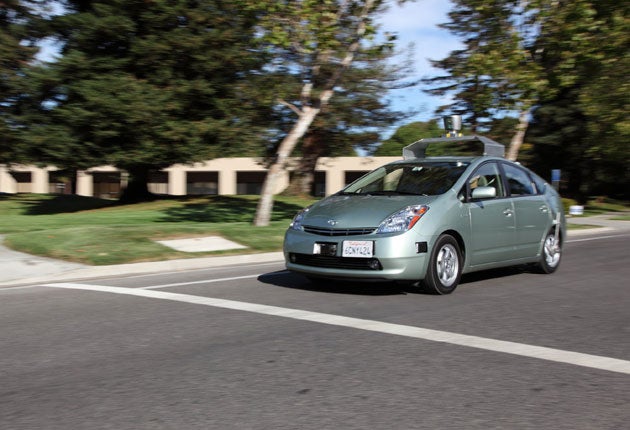Google unveils its latest toy: the car that can drive itself

With its eight hairpin turns negotiating a hair-raising 31.5 per cent gradient, San Francisco's Lombard Street is one of the toughest tests drivers can face. But if Google has anything to do with it, soon they will be able to just sit back and let the car do the work.
Filling a vehicle with enough technology to make a James Bond car look humble, the internet giant has developed a car that can drive itself. The demise of the driving instructor may still be decades away, but the project is no mere pipe-dream.
A squadron of seven modified Toyota Priuses and an Audi TT has already clocked-up 140,000 miles while driving along the roads of California, taking in not only San Francisco's most famous road but also the Golden Gate Bridge, Hollywood Boulevard in Los Angeles and the Pacific Coast Highway.
The experimental vehicles look much the same as others on the road, apart from chimney-like cylinders mounted on brackets above the roofs that act as the cars' eyes. They use a system of video cameras, radar sensors and laser range-finders to detect other vehicles, while following a pre-set route mapped out by drivers in ordinary cars. The software controls acceleration and deceleration, while the cameras read and interpret traffic lights and other signs. According to Google, only one minor accident took place during the testing, when one of the cars received a bump from behind at traffic lights.
Sebastian Thrun, a co-inventor of Google's Street View mapping service and director of the Stanford Artificial Intelligence Laboratory, wrote in an official blog that Google is developing the car primarily in the hope that it will improve traffic safety. Every year, 1.2 million people are killed in road accidents around the world, according to the World Health Organisation, and Google believes its car could halve that number.
Mr Thrun said he also hopes the technology would lead to the creation of the "highway trains of tomorrow". It could free-up time for drivers to get on with business while travelling, and potentially reduce carbon emissions by encouraging car-sharing and optimising fuel efficiency.
The fleet of cars are kept under the watchful eyes of a trained safety driver and a software engineer, ready to take control should anything go wrong, and the police have been kept informed of the trials.
Subscribe to Independent Premium to bookmark this article
Want to bookmark your favourite articles and stories to read or reference later? Start your Independent Premium subscription today.

Join our commenting forum
Join thought-provoking conversations, follow other Independent readers and see their replies